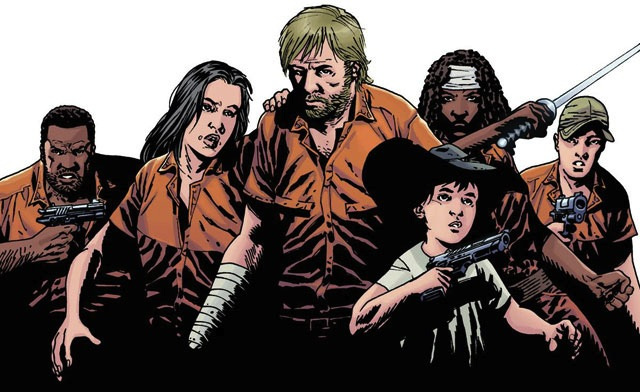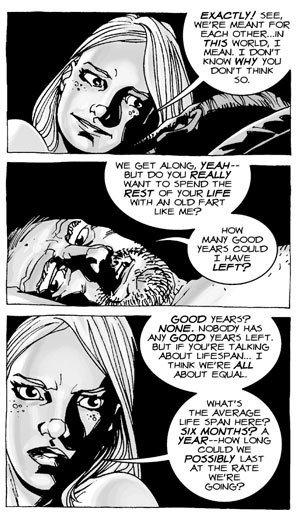Night of the Walking Dead

I can only imagine what Southern U.S. moviegoers must have been thinking when Night of the Living Dead, George Romero’s seminal zombie horror film, lit up the screens in late 1968. The Reverend Martin Luther King Jr. had been assassinated earlier in that same year and the Fair Housing Act had just been enacted during the subsequent civil unrest. The Black Power movement was gaining momentum and things were changing all over the country, slowly but surely, in the direction of greater representation for African-Americans nationwide. That said, controversy over race relations was far from over, particularly in the South, and that tension, among other cultural influences, permeates Living Dead to its core.
Distrust and paranoia drips off every interaction between African-American hero lead Ben Huss and the white, middle-aged Harry Cooper as they argue inside their boarded-up farmhouse. To some degree, the film’s living dead are simply a McGuffin, a scenario designed to isolate these men and women within a metaphoric powder keg. Panicked divisiveness is just as threatening from within as what’s trying to claw through from without. I can only imagine Ben’s determined resistance to Harry’s cowardice would have seemed subtly — if not overtly — disturbing to the audience. Images of this type just hadn’t made it to the large or small screen yet, and even 44 years later, the progressive stand the filmmaker took is striking.
Having watched the first two seasons of The Walking Dead television series on AMC, I can’t say I’ve discovered as much progressive representation in this version of the zombie apocalypse. My expectations were fairly low at the start, never having read the original source material — which is not as abnormal as one might think among hardcore comic fans. Even so, I wasn’t overwhelmed by the show, often finding myself hoping a character (or six) that I found particularly annoying would get eaten so the plot could just move along.
And then I read The Walking Dead.
To say the divergence in approach between the comic book and television series are black and white is almost too on-the-nose. Creator, writer and Image Comics owner Robert Kirkman has crafted a scenario where persons of color or contrasting gender identity are prominent and valued, all the while richer in characterization for their differences. Introduced on page one by initial series artist Tony Moore, Rick Grimes is a small town police officer who takes it upon himself to lead a band of survivors and his family through the murky catastrophe that is zombie infestation. Some of the television cast appears in the comic book, but it is what seems dropped from their characterization in the transition from black-and-white page to Technicolor screen that makes the original series so compelling.

In the course of establishing a world where civilization has completely collapsed, The Walking Dead deftly explores the tension between wanting to return to some sense of order and surrendering to the madness of chaos. No matter how hard Rick and his traveling companions try, there doesn’t seem to be a way to recreate the security they had prior to the sickness for any extended period of time. It’s not just that they’re constantly on the run from being eaten by zombies. In fact, threats from other humans — inside and outside one’s own camp — are far more deadly. Once the initial assumption that life can possibly return to normal fades, these threats become empty of racism or sexism, or even homophobia. Their concerns quickly become far more dire than surface differences, and drill down to basic human needs: hunger, territory, family.
It’s a curious message Kirkman is delivering. The trappings of discrimination that permeate every level of our social structure remain just there. As that construct falls to pieces, in Dead prejudice and hate crime are dragged along with it into the crevasse. Meanwhile, a multiplicity of voices begins to shine. In one particularly emotional scene illustrated by second series penciller Charlie Adlard, Rick’s wife Lori is kissed in a moment of one-sided passion by single mother Carol. The situation is quickly defused, without any sense of revulsion, but leads to a suggestion of polygamy and its place in this new world order. While not a desirable option for Rick and Lori, the topic itself is never ridiculed, nor Carol demonized for suggesting it. Her advances may make Lori uncomfortable, but I never got the sense that it would have been any different had Carol been a man.

 Likewise, the relationship between septuagenarian Dale and twenty-something Andrea is one of the most touching evolutions throughout the series, full of sexual doubts, second-guessing and genuine moments of heartbreak and joy. The two remain deeply committed to each other and build a family, never dismissing their relative ages, but also never letting a cultural hang-up long gone by to limit their happiness. Later inclusion (without comment) of established gay couples and interracial relationships reinforce that this is a world that has evolved beyond such pettiness. Discrimination is no longer an intrinsic human gesture, and perhaps it never was.
Likewise, the relationship between septuagenarian Dale and twenty-something Andrea is one of the most touching evolutions throughout the series, full of sexual doubts, second-guessing and genuine moments of heartbreak and joy. The two remain deeply committed to each other and build a family, never dismissing their relative ages, but also never letting a cultural hang-up long gone by to limit their happiness. Later inclusion (without comment) of established gay couples and interracial relationships reinforce that this is a world that has evolved beyond such pettiness. Discrimination is no longer an intrinsic human gesture, and perhaps it never was.
That Kirkman chose this path of enhanced visibility is at once admirable and also sets The Walking Dead apart from its comic contemporaries and its own adaptation. Consciously or not, the writers behind AMC’s version of this magnum opus render these riches invisible, seemingly sidestepping controversy, but losing depictions that makes the book so powerful. African-American character Tyreese goes from being one of the central figures of the monthly comic — Rick’s right hand man, in fact — to almost just background on television. Renamed T-Dog, he is frequently portrayed as the group’s weakest link, if appearing on screen at all, in sharp contrast to Tyreese’s fearless and determined leadership. It is almost as if T-Dog was always already a zombie before an undead threat was even upon him.
Fortunately, Tyreese and quiet, deadly warrior Michonne are front and center throughout The Walking Dead comic, each often representing the most attractive alternatives for the reader to Rick’s frequent stress-induced buckling. Michonne may come off as mysterious, with her own emotional stability in question, but her place in the group as heroic defender and most reliable companion is undeniable. Like Tyreese, Michonne becomes a sounding board for Rick and doesn’t hesitate to violently upend his leadership when necessary. Her unparalleled physical skill, almost superhuman, and her innate tactical sense are crucial to the tale, and she is absent any crass over-sexualization I see still permeating many contemporary comics — superhero and independent alike.
Michonne, above all other individuals that comprise the “walking dead,” has been the truest delight for me in discovering this book. Few new female characters have had such an immediate and continual impact as she does for me in the series, having last month completed its first 100 issues. Due to appear prominently in the upcoming third season, Michonne could be the entry point those writers need to truly capture the essence of what Robert Kirkman has devised here. My hope is that she is as key to that story, however different, as she has been to the one I’ve read. Anything less would be an honest shame.

—
Matt Santori-Griffith owns one business suit, three pairs of shoes, and over 15,000 comic books. He works a day job as an art director for several non-profit organizations, but spends his dark nights and weekends fighting the good fight on Twitter.com in the guise of @FotoCub. He has not yet saved the world, but isn’t giving up quite yet.